Thunderbolt on Windows Part 2: Intel's DZ77RE-K75 & ASUS' P8Z77-V Premium
by Anand Lal Shimpi on June 3, 2012 2:08 AM EST- Posted in
- Motherboards
- CPUs
- Intel
- Asus
- Thunderbolt
- Ivy Bridge
- Chipsets
Quad-core mobile Sandy Bridge, 2.5" SSDs and Thunderbolt together have allowed me to use a notebook as my primary work machine. I get all of the portability benefits of a notebook, but with almost none of the performance sacrifices. The only thing I'm really missing is a good, external discrete GPU solution but that's a problem being worked on either via Thunderbolt link aggregation or the second revision of the Thunderbolt spec.

Despite what it's done for me, Thunderbolt has to be one of the most strangely handled interface specs of recent history. Intel engineered the spec, but Apple helped with a lot of the connector and cable design and as a result received a year long exclusive on Thunderbolt. Since its introduction, Thunderbolt has received a reasonable amount of support on the Mac platform. Apple even builds a display designed exclusively for use with Thunderbolt equipped Macs. Companies like Promise, Seagate, Western Digital, LaCie and Elgato are all shipping Mac compatible Thunderbolt devices as well.
With the exclusivity agreement over, Intel's partners in the Windows PC space are allowed to ship Thunderbolt enabled motherboards and systems. Making things even more bizarre is the fact that all Thunderbolt devices have to go through Intel's certification program if they are to be approved for use under Windows. Technically only Promise's Pegasus is certified (or about to be certified) for use under Windows, despite the fact that all of these Thunderbolt devices have been available for use under Windows via Boot Camp on Macs.
The complications extend even further when you realize that Apple's own products aren't certified for use under Windows. The Thunderbolt Display is only officially supported under OS X and I don't see Apple being incredibly motivated to work on Windows certification for it. Interfaces like USB are great because you can generally count on anything that physically fits in the port just working. With Thunderbolt on Windows we now have a situation where you can't assume the same.
We got the first look at a Thunderbolt equipped PC motherboard with MSI's Z77A-GD80 a couple of weeks ago. The interface worked but was not without its quirks. To be totally fair however, the Thunderbolt experience under OS X isn't perfectly problem free either. It turns out that MSI sampled that motherboard prior to making it through the motherboard certification process. Since then, the motherboard has made it through cert and has an updated BIOS that should improve its behavior.
Both Intel and ASUS sent us their latest, fully certified, Thunderbolt equipped motherboards for another look at how the interface works under Windows. With motherboards available today, it's now time to take a complete look at what Thunderbolt is like outside of the Apple ecosystem.
The Motherboards
ASUS sent its P8Z77-V Premium motherboard with Thunderbolt support, while Intel sent its DZ77RE-75K Thunderbolt board. Only the ASUS board is publicly available and is priced at $450. ASUS will have a more affordable SKU with integrated Thunderbolt available in the future: the P8Z77-V Pro/Thunderbolt, which should be priced below $300. Other ASUS boards will be upgradeable to support Thunderbolt via an on-board header + add-in card.
The Intel board starts at $262 and goes as high as $278 depending on the in-box configuration (both include WiFi/BT dongles, while the $278 version comes with front panel USB 3.0 support).
Both boards branch the Thunderbolt controller off of the Z77 PCH, borrowing four PCIe 2.0 x1 lanes. Given how full featured these motherboards are, PCIe switches are employed to allow the use of all the remaining PCIe devices connected to the PCH.
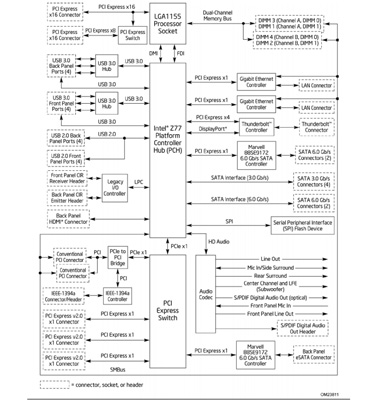
Intel's Z77 Thunderbolt Motherboard Block Diagram
ASUS goes one step further and includes a PCIe 3.0 switch to enable quad-CF/SLI support despite the limited number (16) of PCIe lanes Intel's LGA-1155 CPUs provide. ASUS' board features all the bells and whistles including a 32GB Marvell based Liteon mSATA SSD:
The Thunderbolt port on both boards can serve as either a Thunderbolt port or a DisplayPort output, similar to the behavior on a Thunderbolt Mac. Discrete GPUs are supported through the on-board Thunderbolt/DisplayPort output, provided you have Lucid's Virtu software installed.
As Thunderbolt carries more bandwidth than USB 3.0, trace routing is very important to achieving max performance. You'll notice that on all Thunderbolt boards we've tested thus far, the Cactus Ridge controller and Thunderbolt port are very close to one another. The spec for max trace length between the Thunderbolt controller and port is two inches, compared to up to 10 inches for Intel's USB 3.0 controller.
ASUS tells us that in order to reduce crosstalk it spaced Thunderbolt traces 1.5x wider than traces for USB 3.0 on its boards. Finally, all Thunderbolt traces are on the same PCB layer and don't feature any sharp angles in their route—only gradual arcs, which further improves performance. There's an impressive amount of engineering that has to go into bringing Thunderbolt support to a motherboard.
BIOS/UEFI support for Thunderbolt appears to be identical across all of the third party board makers. ASUS' Thunderbolt options look identical to MSI's for example:
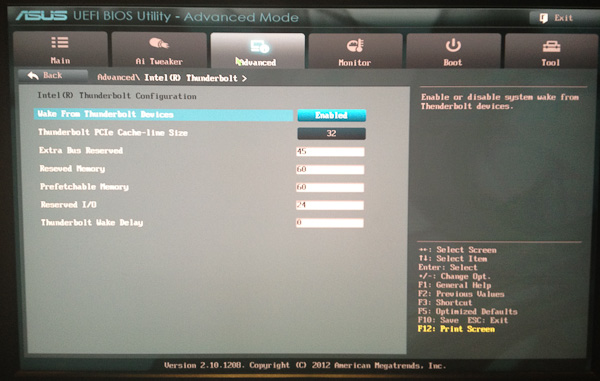
Interestingly enough, Intel doesn't actually expose any of the specific Thunderbolt settings. The Intel board just lets you enable/disable the interface itself:
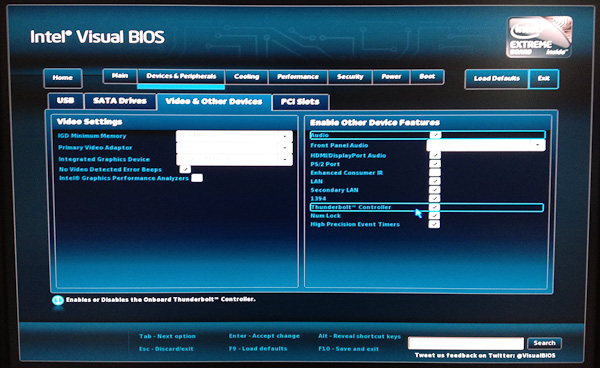


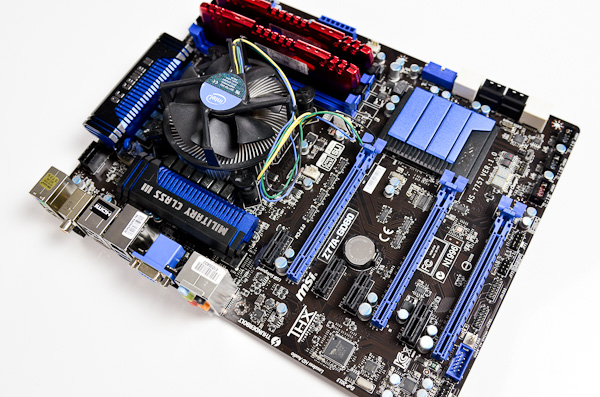
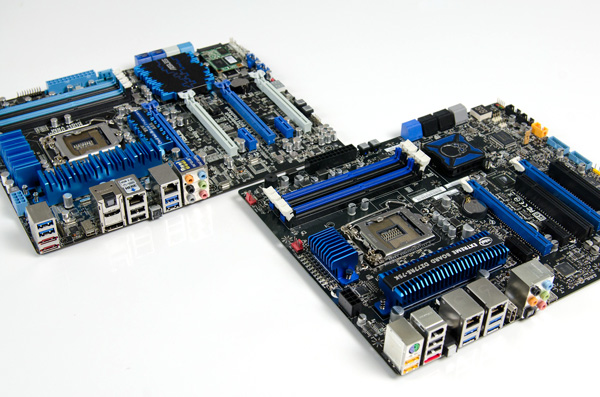

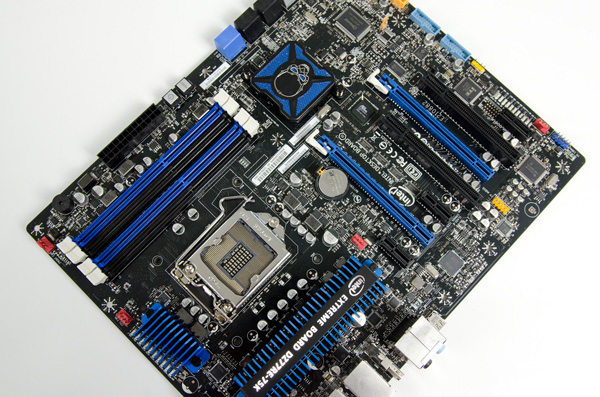
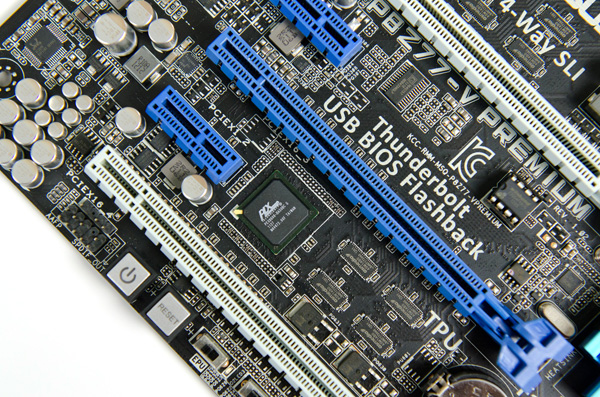
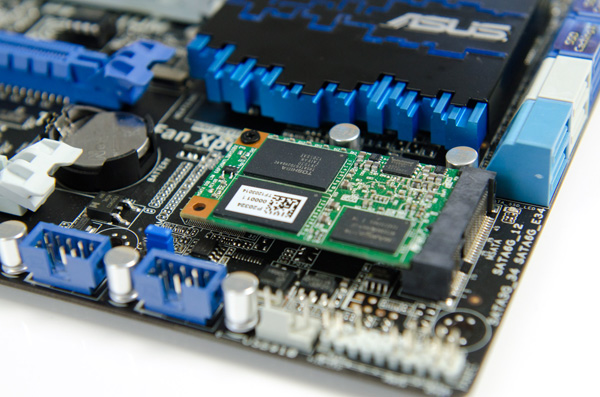
















116 Comments
View All Comments
risa2000 - Sunday, June 3, 2012 - link
Can you provide a reference to this statement?Or did you mean security in the sense of "stability"?
coder543 - Sunday, June 3, 2012 - link
I don't have a link, but he's right. They claim it would lead to security issues because it's a PCI interface. You would have hardware level access to virtually anything.derektrotter - Monday, June 4, 2012 - link
These security issues you speak of are solved with an IOMMU.It would be odd for MS to say they won't support an I/O technology. It's just not something they usually do.
Perhaps the poster was referring to MS' crummy license scheme for Office Mac reacting poorly to Thunderbolt and eSATA drives?
http://answers.microsoft.com/en-us/mac/forum/macof...
rahvin - Monday, June 4, 2012 - link
IOMMU doesn't solve the DMA threat the Thunderbird provides. These ports will be epoxied shut on every government computer because of that threat. Because Thunderbird is raw PCIe it has direct memory access (DMA) through the device, that means in theory a portable Thunderbird harddrive could directly read and write to the memory of any computer it's plugged into without regulation by the OS or computer. You could in theory create a device that auto exploits every computer it's plugged into. These and other reasons are why the USB association and others have said TB is a major security risk (USB abstracts access and was designed from the ground up to be be secure, TB took all that security and threw it out the window).repoman27 - Monday, June 4, 2012 - link
In what ways does IOMMU not provide a viable solution to the threat of DMA attacks?Has every "government" computer had its available PCIe slots, ExpressCard slots and 1394 ports filled with glue?
It's a good thing USB is so secure that thumb drives have never been used to propagate malware or ever exploited as a threat vector. Oh, wait... That's actually quite common.
A Thunderbolt hardware based attack will never be as cheap and easy to build as those based on other technologies. Besides, unless your hardware device can pass Windows certification, it'll probably just cause a BSOD instead of compromising the target system. :P
Can anyone provide a reference to any statement by Microsoft or the USB-IF regarding security issues with Thunderbolt, other than perhaps mentioning that they are the same as other I/O solutions that allow DMA? The USB-IF was founded by Intel and is also responsible for the stewardship of ExpressCard, so it would seem dubious that they were casting any stones.
ka_ - Tuesday, June 12, 2012 - link
IOMMU does indeed look to resolve my initial reservation against Thunderbolt! However, it is only resolved in machines coming with Intel VT-d or AMD HyperTransport, and if the function is activated in BIOS.Activating IOMMU does however degrade DMA performance and use more physical memory for the added I/O page translation tables.
Anand:
What is the performance of Thunderbolt with VT-d / HyperTransport enabled compared with when IOMMU is disabled?
kevith - Sunday, June 3, 2012 - link
I have asked this question so many times, and the silence has been ROARING.But, I'l try once more:
WHY do You keep on setting up RAID 0 in different reviews, this one as well, when every single article YOU WROTE YOURSELF points to the - very clear - conclusion, that RAID 0 HAS NO BENEFITS AT ALL IN REAL LIFE?
Maybe I'l get an explanation this time.
Have a nice sunday.
Tormeh - Sunday, June 3, 2012 - link
RAID0 does have performance benefits, which you have to weigh against stability penalties. In any case, it's good for I/O-testing.As I've understood it, SSD RAID0 has no performance benefits over a similar size single SSD. That is, two 128GB SSDs in RAID0 has similar performance to a single 256GB SSD. In SSDs a big volume (256GB) is faster than a smaller volume (128GB) regardless of how that volume is achieved, given that controller and NAND quality is the same. Not true for HDDs though. Maybe that's where your confusion comes from.
JarredWalton - Sunday, June 3, 2012 - link
RAID0 is for getting maximum sustained throughput, at the cost of reliability (e.g. if one drive fails, you lose the RAID0 set). Since there are no SSDs capable of pushing anywhere near the theoretical throughput of ThunderBolt, it's important to set up something that can potentially saturate the interface.You'll notice that the article never advocates using RAID0; instead Anand states, "In our earlier look at Thunderbolt under Windows I didn't have a working Pegasus driver to really push the limits of the interface's bandwidth. With that now changed, I went to work. I started by pulling out all of the hard drives from the Pegasus R6 and installed four SSDs." I'd think that is all the explanation you need.
3930K - Sunday, June 3, 2012 - link
Anand, I'm sure a few of us would be grateful if you could pull the Mac TB display drivers and put them in a zip for us Windows users.